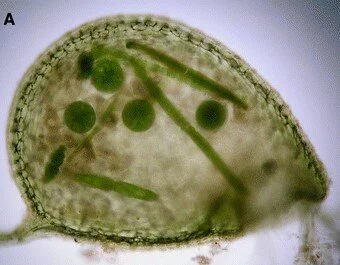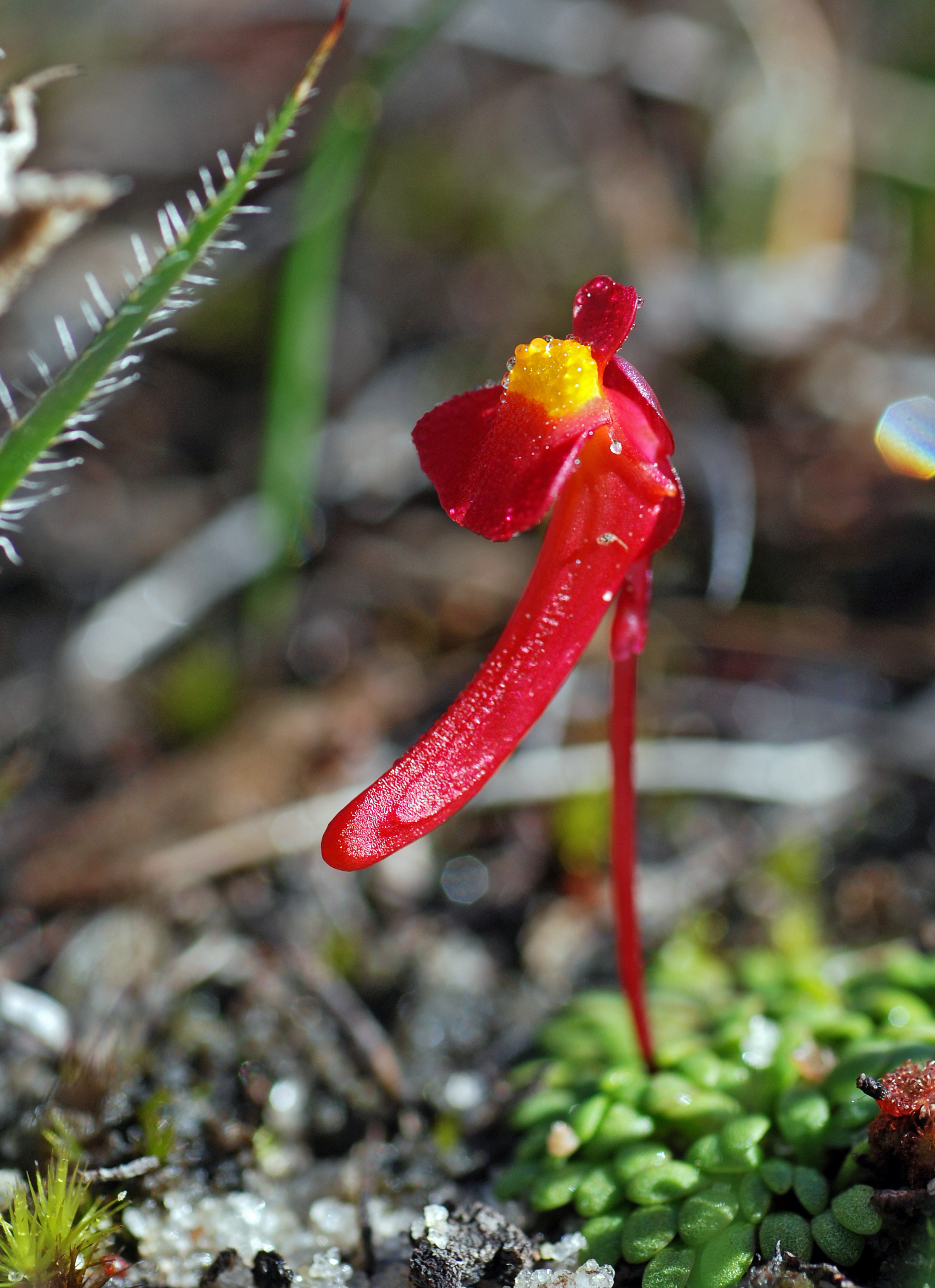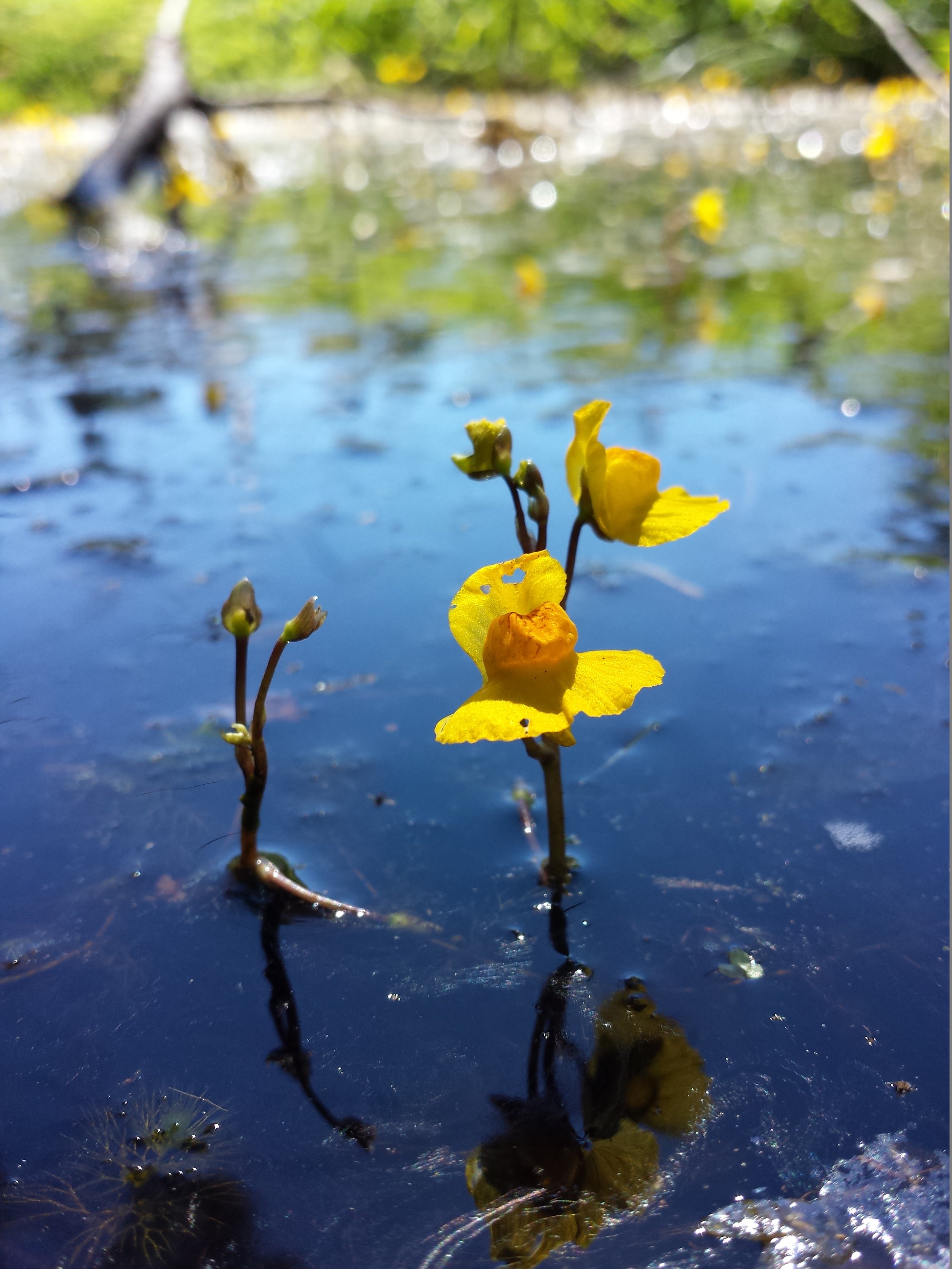Photo by Leonhard Lenz licensed under CC BY-NC 2.0
As is so often the case in nature, the closer we start to look at things, the more interesting they become. Take, for instance, the diet of some carnivorous bladderworts (Utricularia spp.). These wonderful organisms cover their photosynthetic tissues in tiny bladder traps that rapidly spring open whenever a hapless invertebrate makes the mistake of coming too close to a trigger hair. The unlucky prey is quickly sucked into the trap and subsequently digested.
This is how most bladderworts supplement their growth. As cool as this mechanism truly is, our obsession with the idea that these plants are strict carnivores has historically biased the kinds of investigations scientists attempt with these plants. Over the last decade or so, closer inspection of the contents of aquatic bladderwort traps has revealed that a surprising amount of plant material gets trapped as well. Most of this material consists of single celled algae. Is it possible that at least some aquatic bladderworts also gain nutrients from all of that “vegetable” matter?
The answer to this question is a bit more nuanced than expected. Yes, it does appear that non-animal material frequently ends up in bladderwort traps. Much of this comes in the form of a wide variety of algae species. What’s more, it does appear that algae are broken down within the traps themselves, suggesting that the bladderworts are actively digesting this material. The main question that needs to be answered here is whether or not the bladderworts actually benefit from the breakdown of algae.
Evidence of a nutritive benefit from algae digestion is mixed. Some studies have found that the bladderworts don’t appear to benefit at all from the breakdown of algae within their traps. Alternatively, others have found that bladderworts may benefit from digesting at least some types of algae. These authors noted that there doesn’t seem to be any benefit in terms of additional nitrogen for the bladderwort but instead suggest that other trace nutrients might be obtained in this way.
One of the biggest hurdles in this line of research arises from the fact that we still don’t fully understand the digestive mechanisms of bladderworts. It is possible that some of the algal degradation within bladderwort traps has nothing to do with digestion at all. Instead, it could simply be that algae stuck in the traps eventually dies and rots away. Another major question raised by these observations is how tiny organisms like single celled algae even make it into the traps in the first place. What we can say for sure is most algae are far too small to actually trigger the bladder traps. As such, algae is either getting into the traps passively via some form of diffusion or they are sucked in when other, larger prey is captured.
Some research has even suggested that the benefit of trapping algae may depend on the habitats in which bladderworts are growing. Bladderworts living in more acidic water have shown to capture far more algae than bladderworts in more neutral or alkaline water. This has to do with acidity. Numerically speaking, there is far less zooplankton living in acidic water than algae, which means algae is more likely to end up in the bladders. It could be that the benefits of algae are thus greater for plants living in places where little zooplankton is available. Certainly more work will be needed before we can call bladderworts omnivores but the idea itself is exciting.










